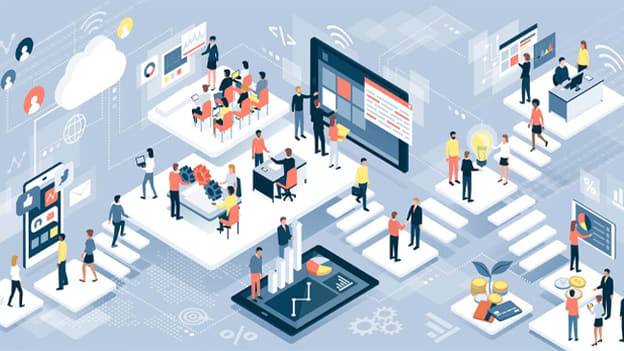Embrace the transparent and flexible culture in hybrid working condition

The working landscape has drastically changed with the pandemic fostering an innovative culture of ‘hybrid working’. While many have moved to remote-only operations, others are encouraging a hybrid future of work where some employees work on-site and others remotely.
The hybrid working model comes with several positives like autonomy, freedom and flexibility, but it also presents certain challenges that can quickly undermine an employee’s trust and confidence. The key is to build a working environment where teams can flourish, be it working from an office or working from any other place. For this to happen, it is important for organisations to put culture in priority, and focus on transparency and alignment at the core of their hybrid workspace. Technology can be a real enabler in the hybrid working space as the right combination of technologies can enhance productivity and streamline workflow processes across the teams.
Building an Efficient Hybrid Working Model
True for any change event, commitment to a revised operational setup requires thoughtful handling. When it is neglected, companies may face several risks – an unproductive, unmotivated employee base being the least desired. To stop this, companies must forge a hybrid workspace culture supported by flexibility and transparency where employees feel empowered and perform to the best of their abilities. Below are the top areas hybrid companies need to address for their working model to be a success:
Opportunity
Workers in a remote setting often feel that they have fewer career development opportunities as compared to their more visible peers working on-site. In a robust hybrid working model, all employees are provided with the same opportunities and career development scopes. The ‘Workforce of the Future’ report reveals that around 35% of employees involved in a survey agreed to the statement that not sitting in the office with their manager might affect career opportunities and growth.
Inclusivity
Uniting people or building inclusivity was no hard task in the pre-pandemic times when employees could bond over a cup of coffee and relationships formed. Things are not the same in a hybrid workspace. Without teams connecting properly, every business runs the risk of creating separation among employees. To keep the organisational culture alive, it is important to encourage communication, collaboration and transparency so that employees work unitedly and not just as individuals.
Transparency
To maintain a positive culture and employee engagement, the hybrid model of working requires companies to be transparent and make sure that everyone feels seen. Apart from daily check-ins and updates, employees must also be given the chance to speak openly about their work experience and concerns, if any. Keeping track of vital indicators like capacity, overtime, workload and work hours should also be a priority.
Taking Help of Technology
Using the right technologies for hybrid workplaces, organisations can lower retention, support recruiting and employee experience and gain a competitive edge in the market. In a pre-pandemic world, it has become more important than ever to select the proper tools for the future of work.
Collaboration tools, for example, have become indispensable to organisations where a hybrid work model is in place. These project management tools help teams to stay on track and see exactly the progress of a project. Since people don’t usually get the opportunity to work arm in arm, these tools streamline communication regarding the workflow. Other than that, collaborative tools are also ideal to foster brainstorming sessions. It isn’t necessary that everyone has to present at the same time. People can conveniently add their ideas or suggestions through a platform where other ideas suggested are also visible. A group can then discuss the most suitable options. This way employees feel connected to the organisation.
Another way to improve employee engagement is to make use of social tools like an HRMS. With the help of these tools, companies can arrange polls, surveys and feedback to understand the response of the employees and take positive actions to encourage unity.
To facilitate equal opportunity for growth in the organisation, supporting employees’ skills, experience through learning applications is another key area. AI-based learning system tools can provide personalised programs, schedules and materials for every employee. This not only improves learning effectiveness but also boosts engagement.
Final Words
In a world, deeply affected by the pandemic, a mix of virtual and in-person environments have become a reality for several workplaces. They require technologies and processes that further empower engagement, collaboration and participation. Those who make it right, will reap rich rewards across employee diversity, happiness, inclusion, and innovation.
















